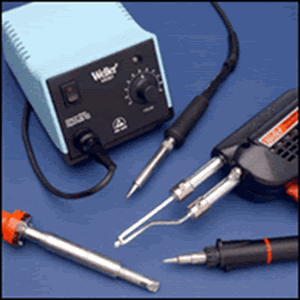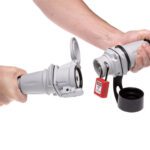Tips on the Tips: Soldering Tip Care and Use from Weller
A list of suggestions for the care and use of soldering tips to prolong life and maintain superior performance.
 The name Weller has long stood for innovative solutions in soldering. Recently, it published this list of suggestions for the care and use of soldering tips, to prolong the tips’ lives and maintain superior performance.
The name Weller has long stood for innovative solutions in soldering. Recently, it published this list of suggestions for the care and use of soldering tips, to prolong the tips’ lives and maintain superior performance.
Soldering Tip Care and Use
When it comes to soldering irons, “the tip is the tool.” The rest of the iron holds and heats the tip and controls its performance. But the tip is the critical component that must transfer heat efficiently and reliably to the connection point. Inadequate or improper tip maintenance is a leading cause of soldering problems. What’s the best way to avoid trouble?
The key to good tip maintenance is to keep the tip tinned with a thin coating of solder at all times. This solder coating also forms a heat bridge between the tip and the parts being soldered. It’s difficult to heat parts efficiently with a point contact alone, as occurs with a “dry” (untinned) tip.
With a tinned tip, the coating tends to flatten out as the tip touches the connection, creating a larger surface contact area, which in turn forms a more efficient heat path.
Proper tinning also optimizes tip life. Most tips consist of a copper base material, plated with iron to prevent erosion. Iron, however, tends to oxidize rapidly. When oxidation occurs, the tip becomes covered with a black or brown scale, which will not wet with solder, thereby greatly reducing heat transfer. This is commonly known as “burnout.” Burned out tips are usually discarded, though they may be cleaned carefully with a fine abrasive and re-tinned.
To prevent burnout, always keep the tip tinned with a thin coat of solder — not only during soldering but also when the iron is sitting at idle in the holder. Very often, an operator will wipe the tip clean before returning the iron to the holder and will not re-tin the tip until starting the next soldering task. This will cause rapid burnout. Also, be sure to tin new tips as soon as they are heated to the solder melting point; otherwise, they can burn out within minutes.
Another common cause of early tip failure is the use of active fluxes, either as liquids or cored in the solder. They can cause rapid surface oxidation, which forms pinholes in the plating. The tin will then enter into solution with the copper base material, creating large holes or pits on the tip surface. Be aware that the water-soluble fluxes, which are corrosive at high temperatures, can be especially damaging to tips. Many companies use water-soluble fluxes only during wave soldering, followed by thorough aqueous cleaning to reduce flux residue on the circuit board.
The use of wire solder cored with water-soluble flux during touch-up and rework operations will still result in very rapid tip failure. One way to minimize the problem is by using a non-corrosive rosin core flux during rework.
The use of “no-clean” fluxes is increasing worldwide. “No-cleans” are designed for soldering very clean parts where minimal cleaning action is needed. This very mild cleaning action is usually insufficient to clean normal oxides off soldering iron tips. After a short amount of use, the tip becomes badly oxidized, will not wet with solder, and exhibits the “burnout” appearance of black or brown scale coating the working surface. To clean tips oxidized due to using “no-clean” fluxes, it is best to flush the tip several times with a rosin-activated flux-cored solder, such as Kester #44. This should remove the oxides, unless the oxidation has been allowed to build up excessively. Once cleaned, the tip surface should be covered with a thick coating of solder.





